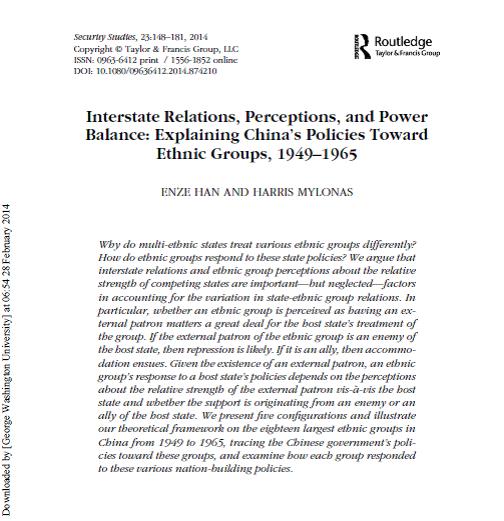Moreover, different ethnic groups have followed different political strategies in response to Chinese nation-building policies. Some are more rebellious, such as the Tibetans and the Uyghurs. Yet other ethnic groups have sought either limited cultural autonomy or even assimilation—the Manchus are a case in point. Its multiple large non-core groups and the apparent contradictions in its nation-building policies render China an ideal case to study. There are important studies focusing on how China's domestic politics affect its strategic behavior in the international system. In this article, we focus on how interstate relations and power balance dynamics impact China's policies toward ethnic groups. In particular, we systematically examine the formative years of the PRC's nation-building process after its founding in 1949.
The structure of the article is as follows. First, we review existing arguments on majority-minority relations before offering our own theoretical framework. We then justify our case selection and present the basic characteristics of the various minority ethnic groups in China. In the third section, we provide an overview of the nation-building policies implemented by the CCP from 1949 to 1965, right before the Cultural Revolution. The Cultural Revolution represents a significant juncture in the history of the PRC. Mao dismantled the whole CCP party structure, and any sensitivity toward ethnic cultural expression was abandoned. The year 1965 was also when Tibet Autonomous Region was founded, symbolizing the consolidation of the PRC's territorial and political control over its periphery. In the fourth section, we evaluate our theoretical configurations against alternative explanations by looking in greater depth at the strategic interactions between the PRC and five ethnic groups over time. Finally, we conclude with a discussion of the insights gained from studying Chinese nation-building for the literature on state-minority relations at large.
View the article (subscription required) © Routledge/Taylor & Francis
Co-authored by Harris Mylonas and Enze Han










